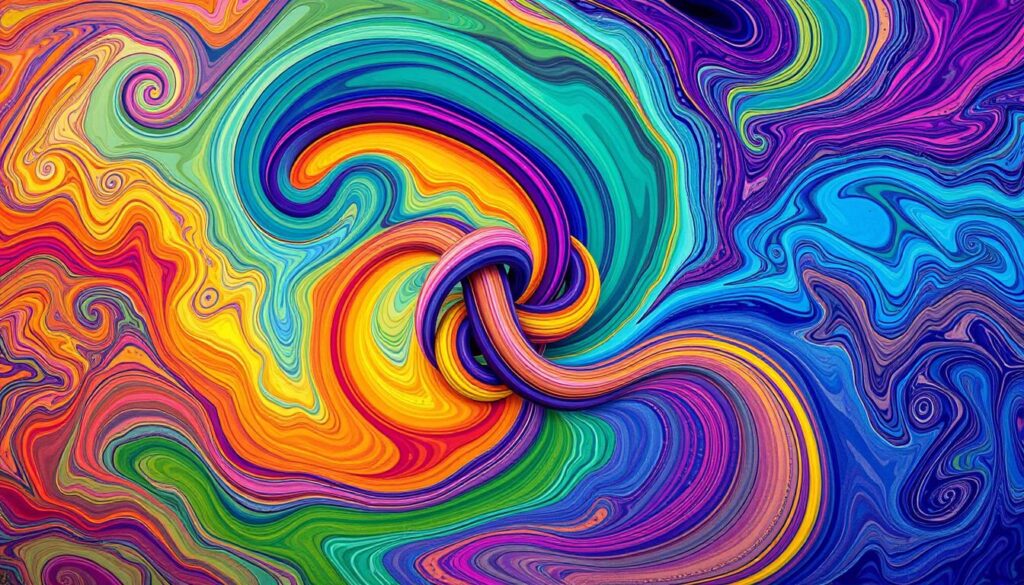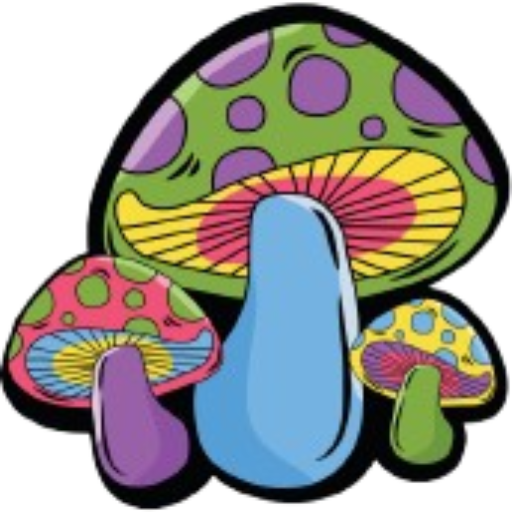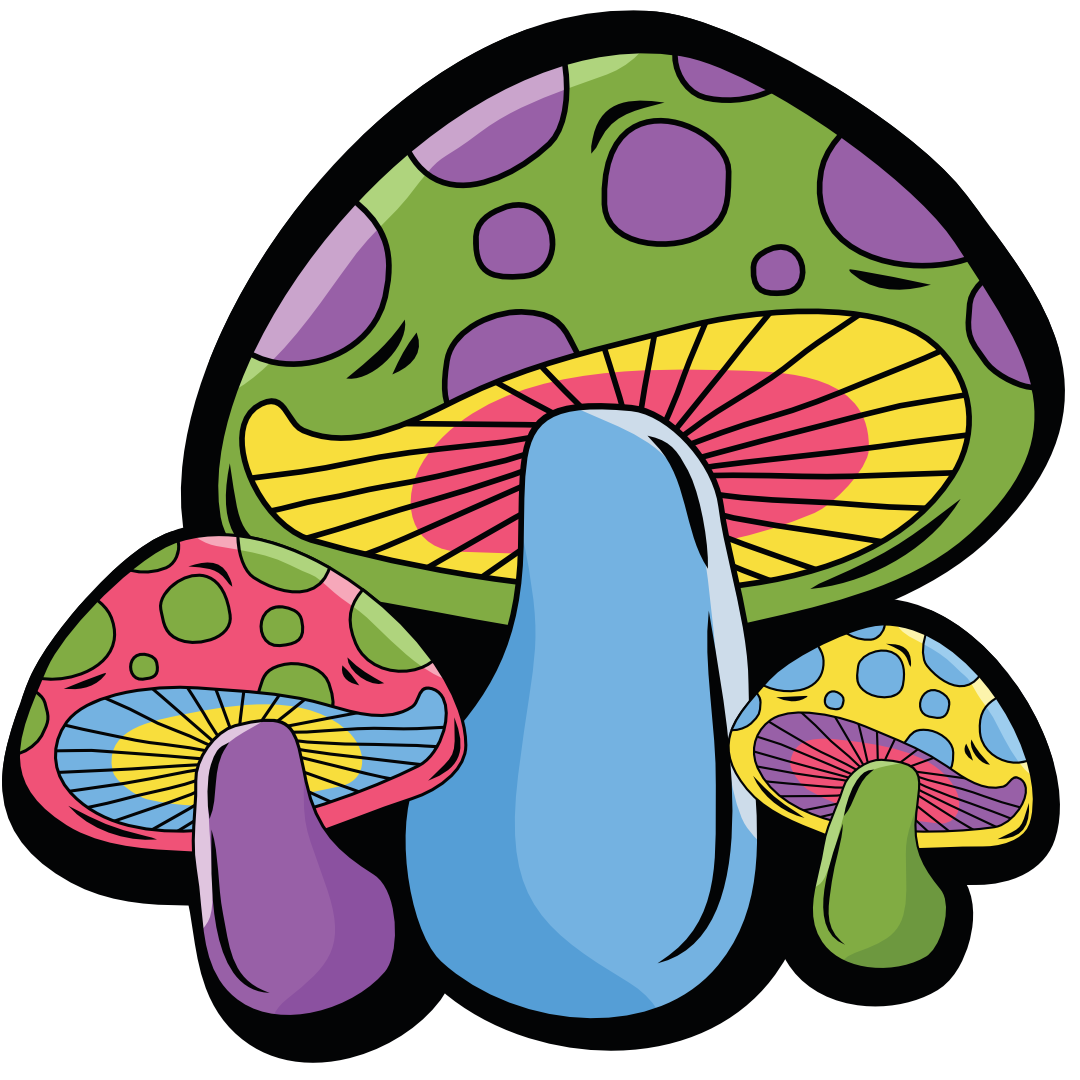The field of Psychedelic Integration Therapy has gained significant momentum in recent years, as interest in the therapeutic potential of psychedelic substances, such as psilocybin, ketamine, MDMA, ayahuasca, and DMT, has surged in Western societies1. This resurgence of interest follows decades of suppression under the War on Drugs, which had previously stifled research and cultural use of these powerful consciousness-altering compounds. In the 1960s, over 1,000 clinical papers covering 40,000 patients were produced, and six international conferences on psychedelic drug therapy were held, showcasing the depth of scientific and medical exploration in this field1.
Today, a growing body of research, including meta-analyses, has revealed “large” to “very large” effect sizes for the use of psychedelic substances in the treatment of various mental health conditions21. This renewed interest has sparked a cultural shift, with several cities in North America passing “Decriminalize Nature” ordinances, indicating a move away from the strict drug war policies of the past1.
As the therapeutic and transformative potential of psychedelics gains wider recognition, the topic of psychedelic integration has become increasingly important. Integrating the insights, perspectives, and experiences gained through psychedelic journeys or consciousness exploration is crucial for facilitating long-lasting personal growth, psychospiritual development, and existential well-being.
Introduction to Psychedelic Integration Therapy
The term “integration” has been increasingly used to describe the period following a psychedelic experience3. This concept encompasses a wide range of definitions and integrative practices, often without clear models or guidance on when and why particular practices might be chosen3. Integration is frequently mentioned in passing in discussions about psychedelics, despite being widely cited as crucial for retaining the benefits and working through the experiences3. In fact, a recent survey of clinicians trained in psychedelic-assisted therapies revealed a strong desire for a better understanding of the integration process3.
The Resurgence of Psychedelic Research and Cultural Interest
Modern research on the psychotherapeutic use of psychedelics has highlighted the value of an integration focus3. Leading organizations funding or organizing psychedelic research, such as The Multidisciplinary Association for Psychedelic Studies, the Beckley Foundation, and Heffter Research Institute, have developed treatment protocols that incorporate preparation, psychological support/psychotherapy, and integration3. This emphasis on the therapeutic process, including integration, was influenced by the work of earlier practitioners and researchers who began developing psychotherapeutic approaches to psychedelics in the 1960s, such as Grof, Metzner, and Richards3.
The Importance of Integration in Psychedelic-Assisted Therapy
Psychedelic integration therapy is a novel practice that Western clinicians are experimenting with in real time3. High-dose psilocybin, ayahuasca, and LSD journeys primarily highlight areas where people are stuck and shift brain functioning to reveal possible pathways out3. Patients who consume psychedelics with an open mindset typically experience awe-inspiring journeys that can shift perspectives, leading to lasting change3. Psychedelic integration therapy aims to engrain the lessons learned during these transformative experiences in the patient’s psyche3.
Psychedelics are non-specific amplifiers that can intensify thoughts and feelings unpredictably, possibly causing discomfort or trauma3. Reflection and application are core subdomains of the psychedelic integration process3. Clinical psychedelic therapy trials utilize models like Acceptance and Commitment Therapy (ACT) and the Accept, Connect, Embody Model (ACE) to enhance integration3. The Accept, Connect, Embody Model (ACE) emphasizes acceptance and connection as crucial components for positive therapeutic outcomes3. Mindfulness-based interventions are commonly used in integration frameworks alongside ACE and ACT models to enhance therapeutic benefits3. Internal Family Systems (IFS) offers a non-pathologizing, systems-oriented lens for integrating psychedelic experiences, acknowledging the complexity and multiplicity of the psyche3.
“Integration is often briefly mentioned in books and articles compared to preparing for, navigating, or facilitating psychedelic experiences, despite being widely cited as very important to retaining benefits and working through psychedelic experiences.”
Indigenous Perspectives on Psychedelic Integration
While the use of psychedelics in the West has recently seen a resurgence, many Indigenous cultures around the world have long-standing traditions of incorporating these substances into their holistic healing practices4. These Indigenous communities often view the mind, body, community, spirit, and nature as a unified entity, where daily life, spirituality, and medicine are not seen as separate domains5.
Holistic Worldviews and Practices in Indigenous Cultures
In contrast to the individualistic and medicalized approach often taken in Western psychedelic research, Indigenous worldviews tend to emphasize the interconnectedness of all things5. This holistic perspective is said to be reflected in the way Indigenous cultures engage with psychedelics, using them within a communal context to address imbalances and support the realignment of the self, community, and the natural world4.
Balance and Interconnectedness in Shamanic Healing
Shamanic practices in many Indigenous cultures employ various techniques, such as hypnosis, trance-like states, drumming, chanting, and spirit manifestations, all within a communal setting, to stimulate engagement with the innate drive toward physiological, spiritual, and social experiences5. This approach underscores the importance of balance and interconnectedness in the healing process, where the individual is seen as inextricably linked to the collective and the natural environment4.
While the Western psychedelic field is experiencing a resurgence4, Indigenous communities have long utilized these substances as part of their holistic worldviews and healing practices, emphasizing the importance of communal integration and the interconnectedness of all life5.
“Indigenous peoples do not have the same need for formal integration because psychedelics are utilized within the community and with a more holistic worldview or because psychedelics are already more integrated into Indigenous cultures that utilize them.”
Western Approaches to Psychedelic Integration Therapy
Recent research on the psychotherapeutic use of psychedelics has garnered much positive press in several Western cultures6. This newfound interest may have shaped expectations that psychedelics are primarily useful for psychotherapeutic purposes. However, Western culture is still heavily influenced by Cartesian dualism, which creates binaries that polarize and compartmentalize thinking, such as mind and body, self and other, or person and nature7. This dualistic thinking may contribute to Westerners needing more support for integration, as they first need to disintegrate limiting mental structures and then orient and adjust toward new, more authentic, and integrated ways of being.
Spiritual hunger and existential distress associated with climate change and socioeconomic inequality may also contribute to the broad resumption of interest in psychedelics in Western cultures7. While psychedelic medicines such as psilocybin, ketamine, ayahuasca, and MDMA are undergoing decriminalization or legalization for therapy use in various regions6, the integration of these experiences is crucial for sustainable personal growth and transformation.

Psychedelic Integration Therapy involves talk therapy alongside the use of psychedelic medicine to enhance integration and understanding of non-ordinary experiences6. Therapists do not directly provide or administer psychedelic medicine in this approach, but rather support the integration process6. The integration of psychedelic experiences is strongly recommended due to the broad range of potential effects following a psychedelic experience, which can aid in addressing trauma, treatment-resistant depression, anxiety, addiction, chronic illness, and terminal disease67.
Psychedelic Integration Therapy: Definitions and Models
The concept of psychedelic integration has garnered increased attention in recent years, despite its long history of only brief mention. Integration practices are now offered by therapists, coaches, and other practitioners, or may be self-guided. However, there are many definitions of psychedelic integration, and the term encompasses a range of integration practices and techniques. This has led to some confusion about what integration is and how it is best practiced.
Synthesizing a Definition of Psychedelic Integration
Recent research has focused on providing the first extensive review and concept analysis of definitions, practices, and integration models of psychedelic integration8. This research has synthesized a definition of psychedelic integration and presented a comprehensive integration framework to bring clarity to the subject.
A Comprehensive Model for Psychedelic Integration
The proposed psychedelic integration model encompasses physical/somatic, psycho-spiritual, and emotional aspects of integration, recognizing the holistic and interconnected nature of the integration process following transformative psychedelic experiences9. This model aims to provide a structured approach to support individuals in integrating the insights and experiences gained from psychedelic-assisted therapies.
“Psychedelics are noted as beneficial tools for bringing up psychological material that individuals may have previously avoided, repressed, or denied, helping to reveal hidden issues.”8
By synthesizing a clear definition and presenting a comprehensive integration framework, this research seeks to bring much-needed clarity to the field of psychedelic integration and guide practitioners and individuals on the path of integrating transformative psychedelic experiences.
Types of Psychedelic Integration
Integrating the profound insights and experiences from psychedelic journeys is a crucial aspect of psychedelic-assisted therapy. One common category of psychedelic integration is physical or somatic integration, which focuses on the body, sensations, and feelings10.
Physical and Somatic Integration
The integration work for this type of integration involves embodied activities like going for walks, exercising, practicing yoga, and engaging in other self-care practices to tend to the physical and mental health impacts of the psychedelic experience10. Somatic integration techniques, such as yoga or breathwork, can help clients become more aware of their body’s subtle energy shifts during psychedelic therapy10.
Psycho-Spiritual Integration
Psycho-spiritual integration revolves around how one views themselves, others, and the world, as well as the relationships between these elements. This can involve reflecting on one’s metaphysical relationship with existence, relationship with spirituality, and envisioning the kind of person and relationships one wants to cultivate in the future10. This integration work helps process the significant insights and themes that arise during the psychedelic experience.
Emotional Integration
Emotional integration relates to the processing of emotions and feelings that emerge during or after a psychedelic experience. This can involve working through difficult emotions like grief, anger, or shame, as well as cultivating positive emotions like gratitude10. The integration process helps to manage, process, and regulate these emotions for overall well-being.
Integration practices can empower clients to heal themselves and become daily practices or tools they can use during challenging times10.
“Psychedelic integration is considered an essential part of psychedelic medicine work.”10
A growing interest in the therapeutic potential of psychedelics such as psilocybin, LSD, and MDMA has been observed in the last decade11. However, limited research exists on the effectiveness of psychedelics compared to established frontline treatments like prolonged exposure (PE) or cognitive processing therapy (CPT)11. Certain psychedelic substances may interact dangerously with prescribed medications or medical conditions, emphasizing the need for consulting with a medical provider before their use11. Oregon licensed its first psilocybin facilitators in April 2023, indicating a progressive approach towards psychedelic therapy in the state11.
Integration is a key component in psychedelic-assisted therapy training programs provided by organizations like PRATI10. Integration practices can include dance and movement, art, nature-based experiences, group sharing, and ritual and ceremony10. Journaling is one of the most common forms of integration in psychedelic therapy10. Nature-based integration techniques can include activities like mindful walks in the woods or sitting in stillness by a body of water10. Group integration sessions can provide reflection, support, and connection for individuals who have had similar psychedelic experiences10. Therapists are advised to provide integration support through open-ended inquiry and suggesting integration activities to clients10.
The Integration Process: Duration and Importance
The integration process of psychedelic experiences can vary greatly in duration, from a few minutes to a few years or even a lifetime12. Some integration activities can be completed relatively quickly, while larger themes and transformations may require ongoing, sustained work12. Integration is an essential component of the psychedelic experience, as it is the process that turns insights and experiences into tangible, lasting change12. Without integration, the psychedelic experience remains potential rather than actualized12.
The integration process is individualized based on the client’s needs and goals12. Different avenues are available for embarking on a psychedelic journey, such as ketamine clinics, indigenous healers, religious ceremonies, or alternative methods like holotropic breathwork12. The integration phase involves making sense of the psychedelic experience to promote new perspectives and behavior change12. The therapist uses concepts from Internal Family Systems, mindfulness, and psychodynamic therapies during integration sessions12.
Ongoing integration and lifelong integration are crucial for maximizing the benefits of psychedelic experiences13. Integration therapy post-psychedelic experience increases the potential for personal transformation and helps apply insights gained to daily life13. Psychedelic integration therapy may be suitable for individuals seeking personal growth, improved mental health, support after a confusing psychedelic experience, or help after a traumatic psychedelic encounter12.
Despite the benefits, risks associated with psychedelic integration therapy include the potential for substance abuse, interactions with medications, adulteration of substances, and safety risks related to drug intoxication12. It is essential to work with qualified practitioners and follow harm reduction guidelines to ensure a safe and meaningful integration process12.
Psychedelic Integration Therapy
Psychedelic integration therapy is an emerging field that focuses on supporting individuals throughout the integration process following psychedelic experiences14. Integration therapists and practitioners employ a variety of techniques and approaches to help clients process, embody, and actualize the insights and transformations sparked by psychedelics14. This can involve modalities like somatic therapy, family/relational therapy, existential therapy, and transpersonal psychology, among others.
Studies have shown that psychedelic-assisted therapy can help alleviate symptoms of depression, anxiety, post-traumatic stress disorder (PTSD), and addiction15. The use of psychedelic substances in therapy has been found to promote neuroplasticity, which allows for greater change and adaptability in the brain’s structure and function15. Psychedelic Integration Therapy aims to support clients in preparing for intentional psychedelic experiences or to process and integrate recent psychedelic experiences15.
Integration helps clients achieve a sense of “wholeness” by processing insights, emotions, and attitudes gained from experiences14. Integration work is highly individualized based on unique circumstances and specific intentions for therapy sessions14. Common categories of integration include physical or somatic, psycho-spiritual, and emotional integration14.
Integration therapy helps individuals make sense of their experiences, gain deeper understandings, and apply insights to their lives, promoting long-lasting changes15. The duration of psychedelic integration varies from a few minutes to several years, depending on the complexity of insights and intentions14. Integration is crucial to transform insights into real-life actions, making significant and lasting changes following therapy sessions14.
Common practices in psychedelic preparation include mindfulness meditation, journaling, creating a safe physical environment, and connecting with a trusted support system15. Psychotherapy combined with psychedelics provides an opportunity for reinforcing changes in beliefs and behaviors initiated during altered states of consciousness15.
Ethical Considerations in Psychedelic Integration Therapy
As the interest in psychedelic therapies continues to grow, it is crucial to address the ethical considerations that arise, particularly around Ethical Integration Therapy, Cultural Sensitivity, and Harm Reduction Integration. Psychedelic use, if not approached responsibly, can have significant impacts on vulnerable communities, especially Indigenous populations whose traditional practices are increasingly being co-opted by Western seekers.
Cultural Sensitivity and Reciprocity
When it comes to the use of Indigenous psychedelic practices, such as ayahuasca ceremonies, Integration Therapists must approach these rituals with the utmost respect, understanding, and a commitment to justice and Reciprocity with Indigenous Practices. There have been reports of negative impacts on Indigenous communities from uninformed Western tourists engaging in these sacred rituals.16 Integration Therapists have a responsibility to educate themselves on the cultural context and histories of these practices, and to engage in a spirit of partnership and mutual learning.
Harm Reduction and Responsible Psychedelic Use
In addition to cultural considerations, Psychedelic Integration Therapy must also prioritize Harm Reduction Integration and Responsible Psychedelic Use. Integration Therapists have a duty of care to ensure client safety, provide education on the risks and benefits of psychedelics, and support clients in developing healthy, sustainable practices around psychedelic use and Integration-Focused Safety17. As the demand for therapeutic use of psychedelics continues to grow16, it is crucial that therapists approach this work with a deep understanding of the legal and ethical implications, and a commitment to minimizing harm and promoting responsible use.
“Ethical considerations in psychedelic integration therapy are paramount, as we navigate the intersection of ancient wisdom, modern science, and the complex social and legal landscape surrounding these powerful substances.”
By upholding the highest standards of Cultural Sensitivity, Reciprocity, Harm Reduction, and Responsible Psychedelic Use, Psychedelic Integration Therapists can help to ensure that the transformative potential of these medicines is harnessed in a way that honors Indigenous traditions, prioritizes client safety, and contributes to the overall wellbeing of the communities they serve.
Resources and Support for Psychedelic Integration
As the field of psychedelic integration grows, individuals seeking support can find a variety of qualified practitioners and facilitators to guide them through this process. Psychedelic Integration Resources, Integration Practitioners, and Qualified Facilitators are key elements in this emerging ecosystem18.
Online communities and educational materials also serve as valuable Psychedelic Integration Resources for self-guided integration work. These platforms provide guidance, peer support, and information on integration practices, models, and techniques. Examples include Micro Zoomiez (microzoomiez.ca), online forums, and Integration-Focused Content like podcasts and publications18.
Finding Qualified Practitioners and Facilitators
Individuals can seek out therapists, coaches, or specialized Integration Practitioners who have training and experience in psychedelic integration. These qualified professionals can provide personalized support and facilitate a more structured integration process19.
Online Communities and Educational Materials
Psychedelic Integration Communities, such as online forums and discussion groups, offer opportunities for peer support and shared learning. These platforms allow individuals to connect with others who have navigated the integration process, exchange insights, and access Integration Education resources18.
Organizations like the Multidisciplinary Association for Psychedelic Studies (MAPS) provide comprehensive Integration-Focused Content, including workbooks, exercises, and structures to help individuals customize their integration journey19.

“Integration involves active effort to revisit and work with psychedelic experiences, as noted by Bathje, Majeski, & Kudowor (2022), as experiences can fade without intentional engagement.”
Conclusion
Psychedelic integration therapy is an essential component of unlocking the transformative potential of psychedelic experiences20. By supporting individuals throughout the integration process, therapists and practitioners can help facilitate lasting personal growth, well-being, and positive life changes20. However, integration is an ongoing, lifelong process that requires sustained effort and commitment21. Individuals exploring psychedelics are encouraged to approach the work with intention, dedication, and a willingness to engage in the necessary integration activities to fully embody the insights and transformations sparked by these powerful substances.
As the field of Psychedelic Integration Therapy Conclusion continues to evolve, the importance of responsible and ethical use of these substances cannot be overstated21. Harm reduction practices, such as those incorporated in Harm Reduction Psychotherapy, can help ensure that individuals navigate their psychedelic journeys with the necessary support and guidance21. By prioritizing Ongoing Integration Work, individuals can maximize the long-term benefits of their psychedelic experiences and foster profound personal growth and well-being.
Overall, psychedelic integration therapy represents a powerful tool for personal transformation and healing20. By embracing this approach with care, intention, and a commitment to the integration process, individuals can unlock the full potential of these remarkable substances and embark on a profound journey of self-discovery and growth.

